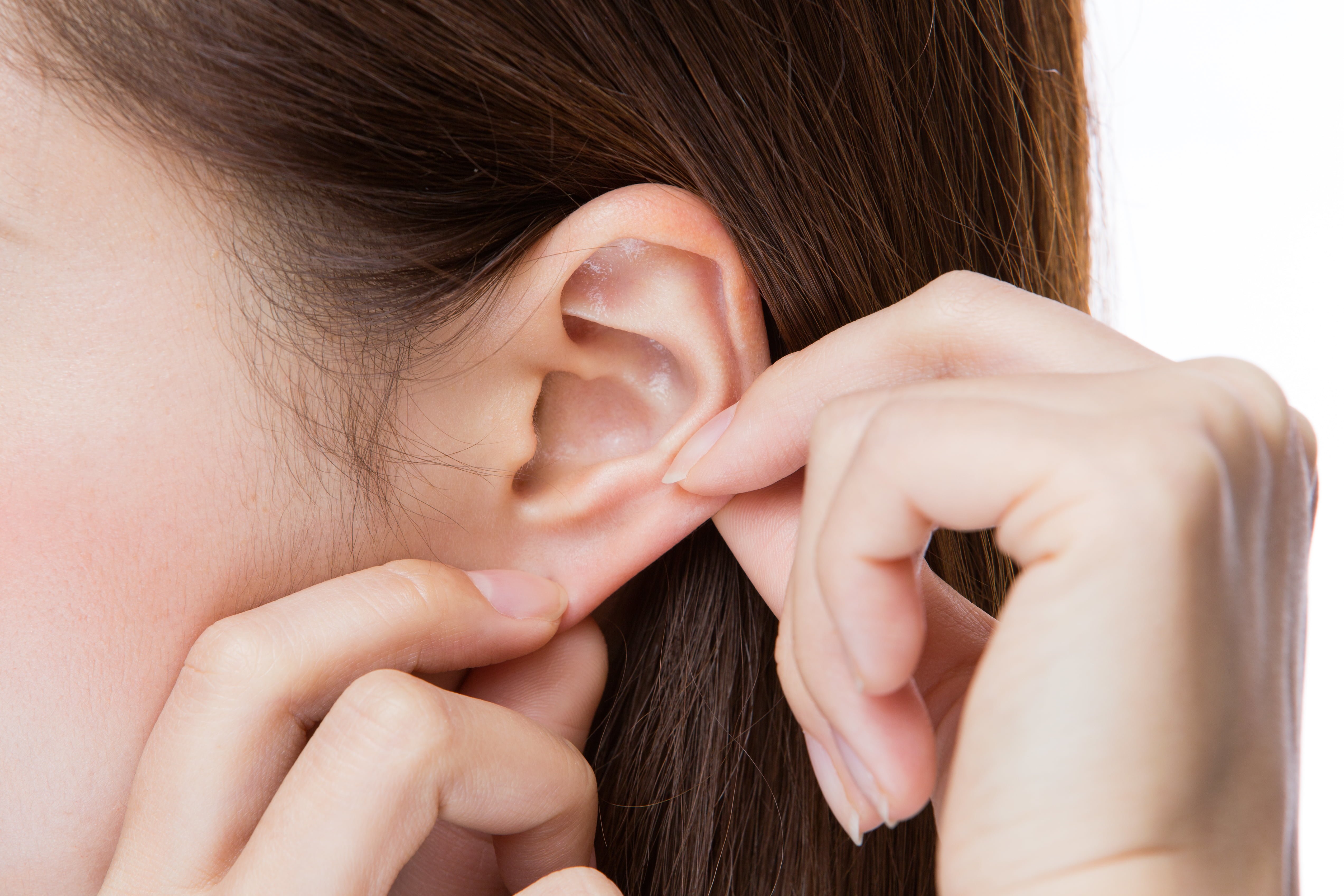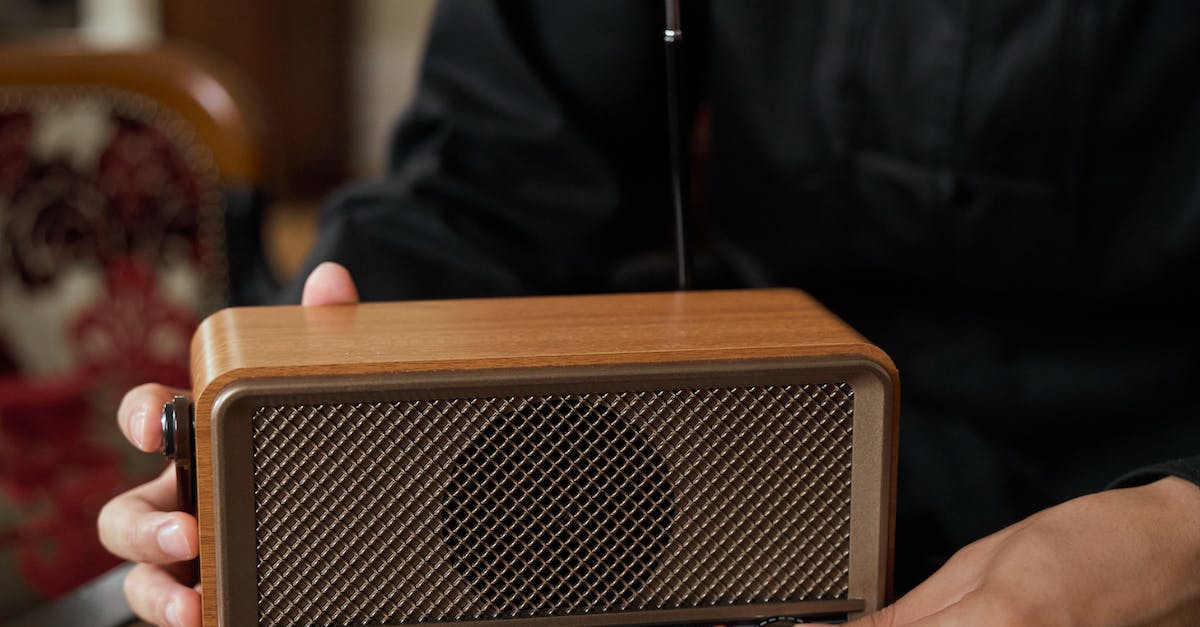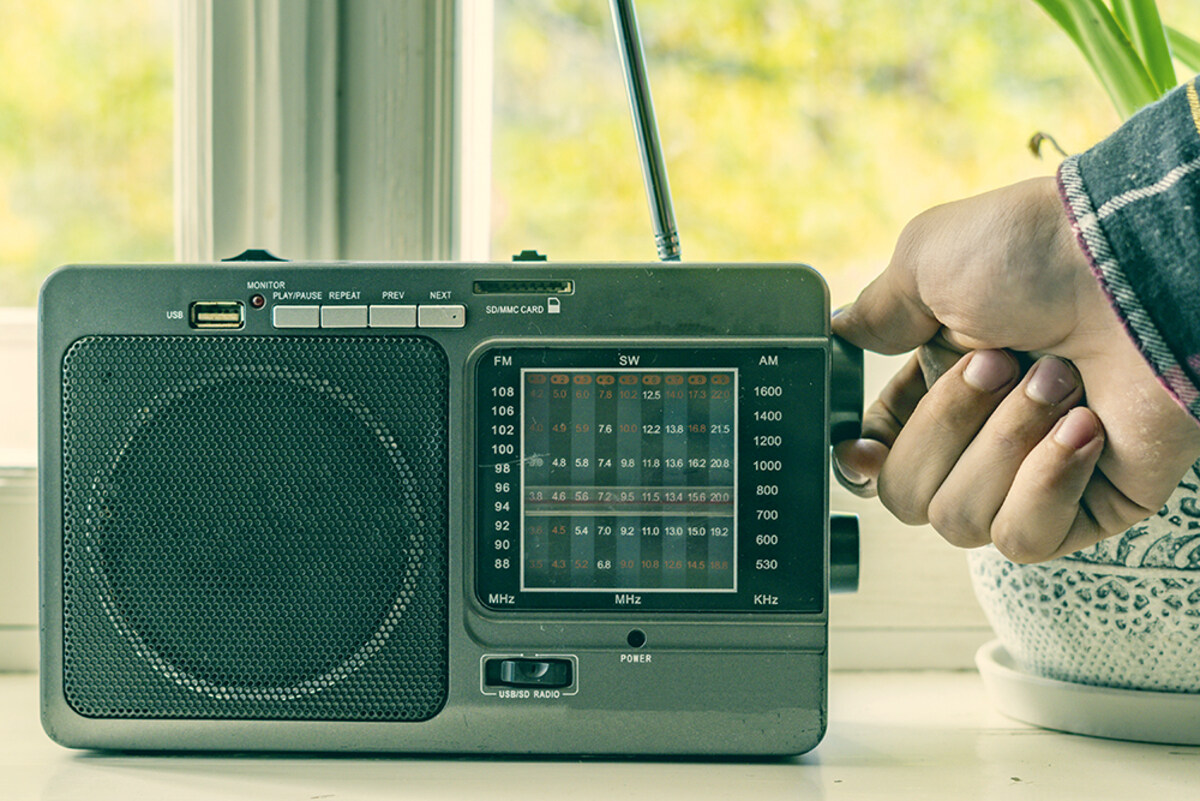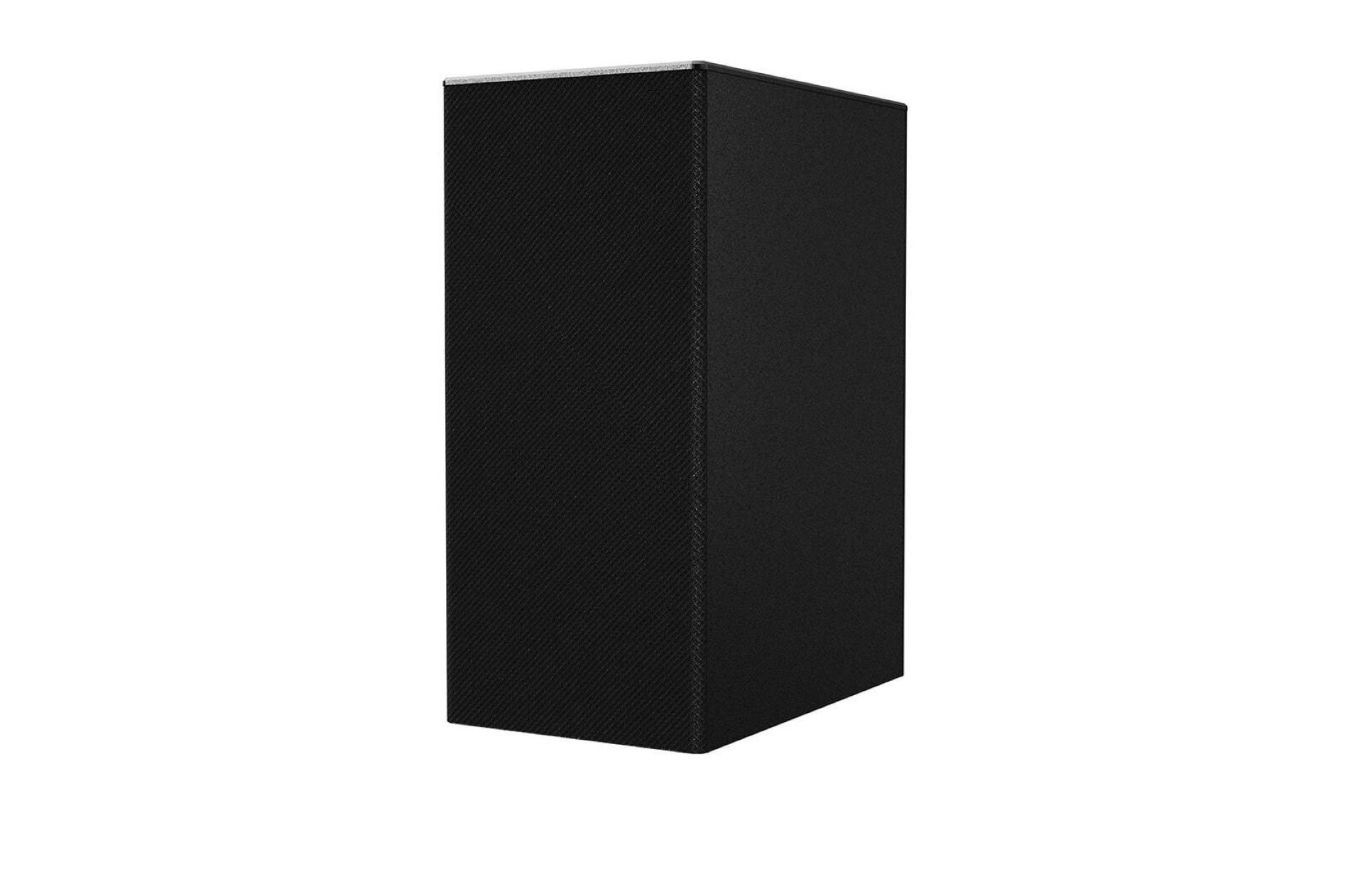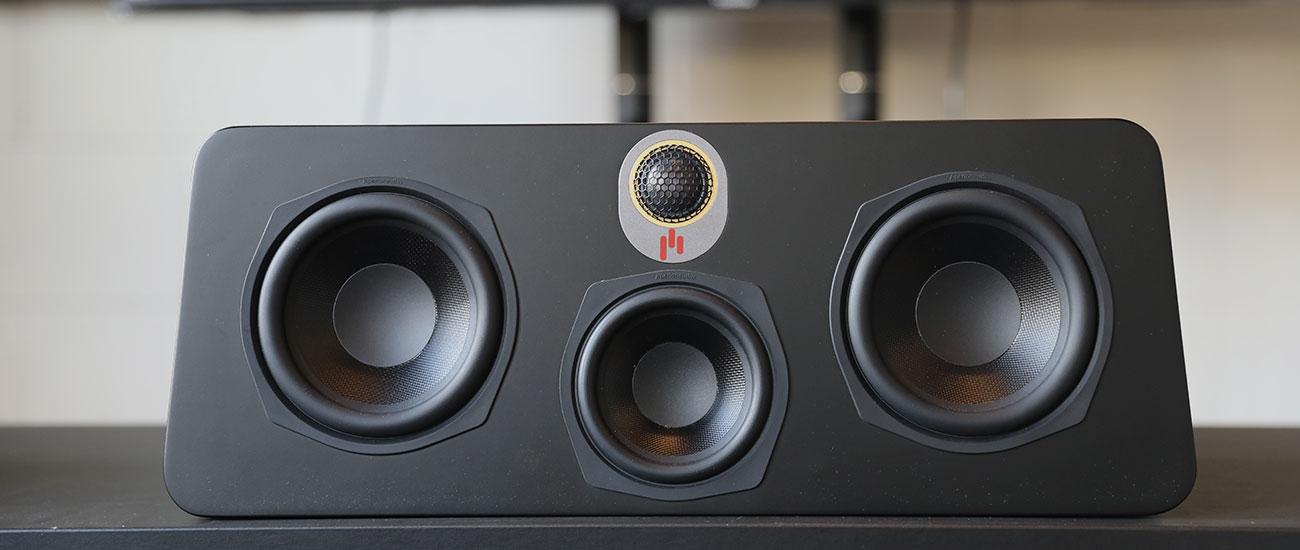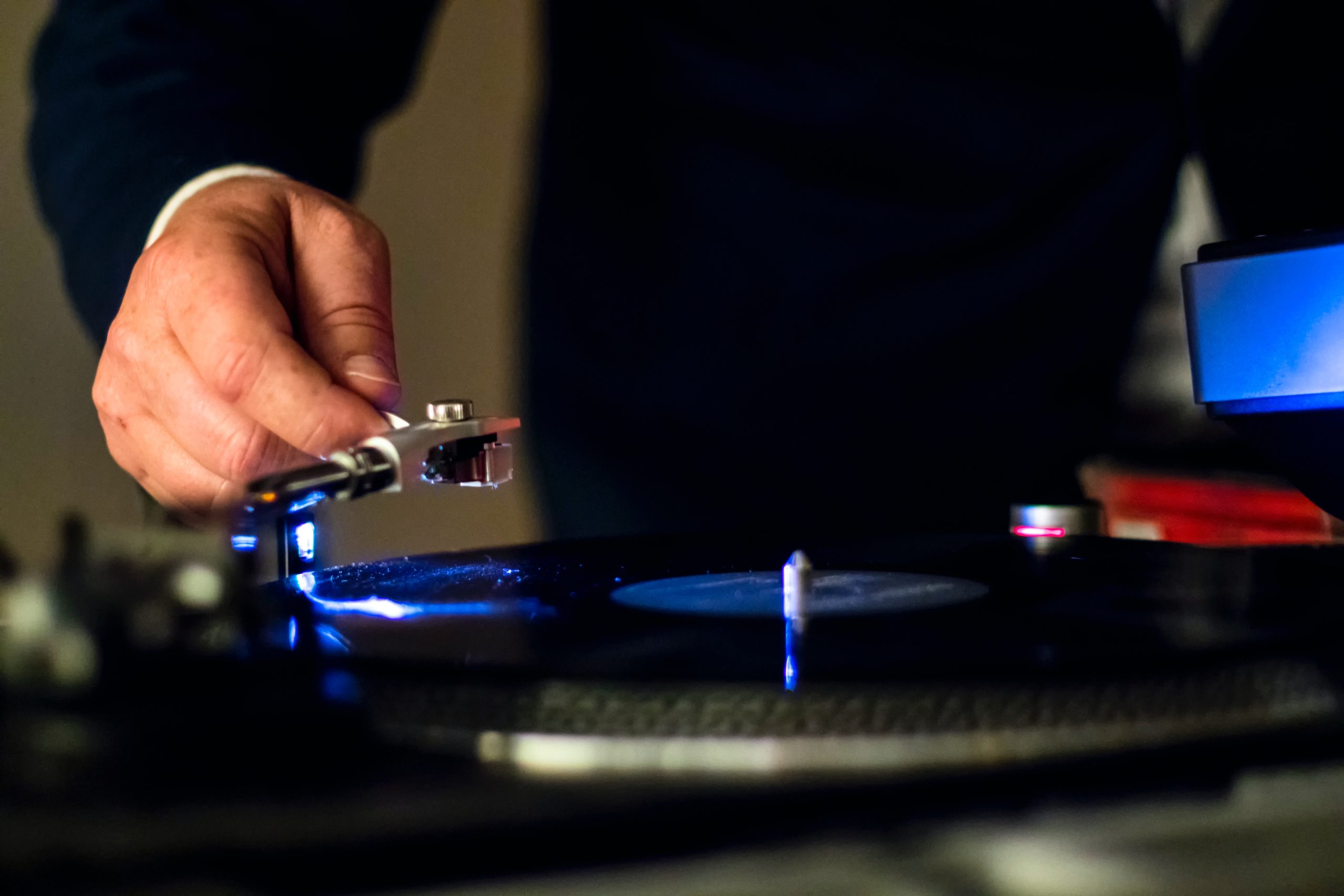Home>Devices & Equipment>Subwoofer>Why Does My Subwoofer Smell


Subwoofer
Why Does My Subwoofer Smell
Published: January 22, 2024
Discover why your subwoofer is emitting an unusual smell and learn how to address this issue effectively. Protect your investment and enjoy optimal sound quality with these helpful tips.
(Many of the links in this article redirect to a specific reviewed product. Your purchase of these products through affiliate links helps to generate commission for AudioLover.com, at no extra cost. Learn more)
Table of Contents
- Introduction
- Common causes of subwoofer smells
- Overheating
- Electrical issues
- Damage to the cone or surround
- Accumulated dust and debris
- Mold or mildew growth
- Solutions to subwoofer smells
- Ensure proper ventilation and cooling
- Check for electrical problems and glitches
- Repair or replace damaged parts
- Clean the subwoofer regularly to remove dust and debris
- Prevent mold and mildew growth
- Conclusion
Introduction
Subwoofers are an essential component of any audio system, providing deep and powerful bass frequencies that can bring music and movies to life. However, just like any electronic device, subwoofers can sometimes emit strange and unpleasant smells. If you’ve noticed an unusual odor coming from your subwoofer, it’s important to address the issue promptly to prevent further damage and ensure optimal performance.
In this article, we will explore the common causes of subwoofer smells and provide solutions to help you mitigate the issue. Whether it’s overheating, electrical problems, damaged parts, dust accumulation, or even mold growth, we’ll guide you through the steps to diagnose and resolve the problem.
By understanding the potential causes and implementing the necessary actions, you can ensure that your subwoofer remains in top-notch condition, prolonging its lifespan and preserving the audio quality of your sound system.
So, if you’ve ever wondered, “Why does my subwoofer smell?”, let’s dive into the possible explanations and find the solutions to eliminate those unpleasant odors once and for all.
Common causes of subwoofer smells
When it comes to subwoofer smells, there are several common causes to consider. Identifying the source of the odor is crucial in determining the appropriate solution. Here are some of the most frequent culprits:
- Overheating: Subwoofers generate a significant amount of heat when they are in use. If the subwoofer is not adequately ventilated or if the heat sinks and cooling fans are not functioning correctly, it can lead to overheating. This excessive heat can cause components within the subwoofer to emit a burning smell.
- Electrical issues: Faulty electrical connections or a power surge can result in electrical problems within the subwoofer. These issues can generate a distinct odor, often similar to the smell of burning electronics. It’s crucial to address these electrical issues promptly to prevent further damage.
- Damage to the cone or surround: The cone or surround of a subwoofer is responsible for producing deep, resonant bass tones. If these components become damaged or torn, the subwoofer may emit a strange smell. This could indicate that the voice coil or other internal components are being affected.
- Accumulated dust and debris: As with any electronic device, subwoofers can accumulate dust and debris over time. This build-up can restrict airflow and cause the components to heat up, resulting in a burning smell. Regular cleaning and maintenance can prevent this issue.
- Mold or mildew growth: If a subwoofer is exposed to a humid environment or if moisture is present, it can lead to mold or mildew growth. This can not only produce an unpleasant odor but also impact the performance and longevity of the subwoofer. Proper measures should be taken to prevent moisture and promote ventilation.
By understanding these common causes, you can start narrowing down the source of the smell and take the necessary steps to resolve the issue. In the following sections, we will go into more detail on how to tackle each specific problem to ensure your subwoofer remains in optimal condition.
Overheating
One of the common causes of subwoofer smells is overheating. Subwoofers generate a significant amount of heat when they are in operation, and if they do not have adequate ventilation or proper cooling mechanisms, it can lead to overheating issues. This excessive heat can cause internal components to emit a burning smell.
To prevent overheating, it’s important to ensure that your subwoofer is placed in an open and well-ventilated area. Avoid placing it in a confined space or near other heat-generating devices. Additionally, check if the subwoofer has built-in cooling fans or heat sinks. If these components are not functioning properly, it may be necessary to repair or replace them.
If you notice that your subwoofer is overheating and emitting a burning smell, it’s essential to take immediate action. Turn off the subwoofer and unplug it from the power source. Allow it to cool down completely before attempting to use it again. While the subwoofer is cooling down, inspect the surrounding area for any blockages that might inhibit airflow, such as furniture or obstructions. Clearing these blockages can help improve airflow and prevent future overheating episodes.
If the overheating issue persists, it is advisable to consult a professional technician or contact the manufacturer for further assistance. They can assess the situation and provide guidance on the best course of action, which may involve repairs or replacement of faulty components.
Regular maintenance is also important in preventing overheating. Ensure that the subwoofer is free from dust and debris by periodically cleaning the vents and surfaces. Use a soft brush or compressed air to remove any accumulated particles that could impede proper airflow.
By addressing overheating issues promptly and implementing preventive measures, you can help prolong the life of your subwoofer and prevent any further unpleasant smells or performance issues.
Electrical issues
Electrical issues are another common cause of subwoofer smells. Faulty connections or power surges can lead to problems within the subwoofer’s electrical system, resulting in a distinct odor resembling that of burning electronics.
If you suspect that electrical issues are the cause of the smell, the first step is to unplug the subwoofer from the power source immediately. This will help prevent any further damage and ensure your safety during the troubleshooting process.
Inspect the power cord and other connections for any signs of damage, such as frayed wires or loose connections. If you notice any issues, replace the damaged power cord or tighten the connections securely. It’s essential to use appropriate cables and connectors that are compatible with your subwoofer and power source.
Power surges can also occur due to fluctuations in the electrical supply. To protect your subwoofer from these surges, consider utilizing a surge protector or an uninterruptible power supply (UPS). These devices can help regulate the electrical flow and provide an extra layer of protection against power irregularities.
If you’ve taken these steps and the electrical issues persist, it’s advisable to seek professional help. A qualified technician can conduct a thorough inspection and diagnose any underlying electrical problems. They may need to repair or replace internal components or circuits to resolve the issue.
Finally, to prevent future electrical problems, it’s crucial to follow the manufacturer’s guidelines for using and maintaining your subwoofer. Avoid exposing it to extreme heat or moisture, as these conditions can contribute to electrical malfunctions. Additionally, periodically check the subwoofer’s power supply and connections to ensure they are secure and in good condition.
By addressing electrical issues promptly and adopting preventive measures, you can ensure the safety and longevity of your subwoofer while eliminating any unpleasant smells associated with electrical problems.
Damage to the cone or surround
Damage to the cone or surround of a subwoofer can be another potential cause of strange smells. The cone and surround are crucial components responsible for producing deep, resonant bass tones. If they become damaged or torn, it can affect the subwoofer’s performance and lead to an unusual odor.
If you suspect damage to the cone or surround, visually inspect the subwoofer for any visible signs of wear or tear. Look for cracks, holes, or disintegration in the cone or surround. Additionally, gently press on the cone to check for any unusual movement or stiffness.
If there is apparent damage, it’s important to address the issue promptly. Minor tears or holes can sometimes be repaired using specialized speaker repair kits or adhesives. Follow the instructions provided by the manufacturer or consult a professional technician for guidance on the appropriate repair method.
However, in cases of severe damage or if the cone or surround is beyond repair, it may be necessary to replace the affected component. Contact the manufacturer or an authorized service center to inquire about replacement parts or seek professional assistance for the repair.
Prevention is key in maintaining the integrity of the cone and surround. Avoid subjecting the subwoofer to excessive vibrations or placing heavy objects on top of it. Be mindful of the volume levels you use, as playing at excessively high volumes can exert excessive force on the cone, leading to damage.
Regular inspection and cleaning can also help prevent further damage. Gently dust the cone and surround with a soft brush to remove any accumulated debris or particles. This will help prevent any build-up that can impact the performance of these components.
By promptly addressing damage to the cone or surround and taking preventive measures, you can ensure the optimal performance of your subwoofer while eliminating any strange smells related to these issues.
Accumulated dust and debris
Over time, subwoofers can accumulate dust and debris, which can contribute to strange smells and affect their performance. Dust and debris can build up on the subwoofer’s vents and surfaces, leading to restricted airflow and overheating.
To address the issue of accumulated dust and debris, start by unplugging the subwoofer from the power source and allowing it to cool down. Once it has cooled, use a soft brush or a can of compressed air to gently remove any visible dust or debris from the vents, surfaces, and grille. Be careful not to apply too much pressure or use abrasive tools that could damage the subwoofer’s exterior.
Regular cleaning is essential to prevent further build-up. Make it a habit to clean the subwoofer at least once every few months, or more frequently if you live in a particularly dusty environment. It’s also a good idea to clean the surrounding area to minimize dust accumulation around the subwoofer.
In addition to visible dust, there may be unseen particles that have settled inside the subwoofer. If you’re comfortable doing so, consider removing the back panel or access panel (if applicable) to access the internal components. Use a soft brush or compressed air to carefully clean away any dust or debris that may have found its way inside the subwoofer.
Prevention is key in reducing dust and debris accumulation. Place the subwoofer in a location where it is less likely to collect dust, such as on a shelf or stand rather than on the floor. Avoid placing it in close proximity to sources of dust and dirt, such as open windows or high-traffic areas.
Regular cleaning and maintenance not only help prevent strange smells but also improve the overall performance and longevity of your subwoofer. By keeping it free from dust and debris, you can ensure optimal airflow and prevent any potential overheating issues caused by restricted ventilation.
Mold or mildew growth
Mold or mildew growth can be a surprising and unpleasant cause of subwoofer smells. If the subwoofer is exposed to a humid environment or if moisture is present, it can create a breeding ground for mold and mildew, leading to not only an unpleasant odor but also potential damage to the subwoofer.
If you suspect mold or mildew growth, carefully inspect the subwoofer for any visible signs, such as dark spots or patches. Additionally, take note of any musty or damp smell emitting from the subwoofer.
To address the issue, start by cleaning the exterior of the subwoofer using a mild cleaning solution and a soft cloth. Make sure to follow the manufacturer’s guidelines on cleaning and avoid getting any liquids into the internal components of the subwoofer.
If there are visible signs of mold or mildew on the exterior, it’s important to take additional steps to remove it. Create a mixture of equal parts water and white vinegar or hydrogen peroxide. Dip a clean cloth into the mixture and gently scrub the affected areas. Ensure that the cloth is not excessively wet to avoid any liquid seeping into the subwoofer.
If the mold or mildew has spread to the interior of the subwoofer, it’s advisable to seek professional help. Mold and mildew removal inside electronic devices can be intricate and may require disassembling the subwoofer. An experienced technician will have the expertise and equipment to safely clean the internal components without causing further damage.
To prevent future mold or mildew growth, it’s essential to maintain proper ventilation and ensure that the subwoofer is not exposed to excessive moisture. Avoid placing the subwoofer in damp or humid environments, and consider using a dehumidifier in the room where it is located. Regularly inspect and clean the subwoofer to prevent any moisture build-up.
By addressing mold or mildew growth promptly and implementing preventive measures, you can eliminate the unpleasant smell and safeguard the performance and longevity of your subwoofer.
Solutions to subwoofer smells
Dealing with subwoofer smells can be frustrating, but there are solutions available to help resolve the issue. By identifying the underlying cause and taking appropriate actions, you can eliminate unpleasant odors and restore optimal performance to your subwoofer. Here are some solutions to consider:
- Ensure proper ventilation and cooling: Make sure your subwoofer is placed in an open and well-ventilated area. Avoid confining it to a tight space or positioning it near heat-generating devices. Check that the cooling fans and heat sinks are functioning correctly to prevent overheating.
- Check for electrical problems and glitches: Inspect the power cord and connections for any damage and replace as necessary. Consider using surge protectors or uninterruptible power supplies (UPS) to safeguard your subwoofer against power surges.
- Repair or replace damaged parts: If there is visible damage to the cone, surround, or other components, repair or replace them accordingly. Consult the manufacturer or a professional technician for guidance on the best course of action.
- Clean the subwoofer regularly to remove dust and debris: Use a soft brush or compressed air to remove dust and debris from the vents, surfaces, and grille of your subwoofer. Regular cleaning ensures proper airflow and helps prevent overheating.
- Prevent mold and mildew growth: Protect your subwoofer from moisture and humidity. Avoid placing it in damp environments or near sources of water. Clean the exterior regularly and address any mold or mildew growth promptly by following appropriate cleaning procedures.
It is important to note that if you are unsure about the cause of the smell or are uncomfortable performing any troubleshooting or repairs on your own, it’s always recommended to seek professional assistance. A qualified technician can provide expert guidance and ensure that your subwoofer is properly diagnosed and repaired.
By implementing these solutions and maintaining a regular cleaning and maintenance routine, you can eliminate subwoofer smells and keep your audio system performing at its best.
Ensure proper ventilation and cooling
Proper ventilation and cooling are essential for maintaining the optimal performance and longevity of your subwoofer. Inadequate airflow can lead to overheating, which not only affects the subwoofer’s performance but can also cause strange smells. Here are some steps to ensure proper ventilation and cooling:
1. Placement: Choose a location for your subwoofer that allows for ample airflow. Avoid placing it in a closed cabinet or crowded space where heat can build up. Optimal placement is often on a shelf or stand where there is sufficient air circulation around the subwoofer.
2. Clearance: Make sure there is sufficient clearance around the subwoofer. Leave at least a few inches of space between the subwoofer and surrounding objects, such as walls, furniture, or other audio equipment. This allows for better airflow and prevents heat from getting trapped.
3. Cooling fans and heat sinks: Some subwoofers are equipped with cooling fans and heat sinks to dissipate excess heat. Check that these components are functioning correctly. If you notice any issues, such as noisy fans or heat sinks that are not cooling effectively, consult the manufacturer or a professional technician for assistance in repairing or replacing these parts.
4. Dust and debris removal: Regularly clean the vents and surfaces of your subwoofer to remove any accumulated dust and debris. Use a soft brush or compressed air to gently remove particles that may be obstructing airflow. This simple maintenance task can help prevent overheating and eliminate potential smells caused by restricted ventilation.
5. Temperature and humidity: Pay attention to the temperature and humidity levels in the room where your subwoofer is located. Extreme heat or high levels of humidity can contribute to overheating and create an environment conducive to mold or mildew growth. Aim for a moderate temperature range and use a dehumidifier if necessary to maintain an optimal environment for your subwoofer.
By ensuring proper ventilation and cooling, you create an environment that allows your subwoofer to operate effectively and reduces the risk of strange smells caused by overheating. Regular maintenance and attention to these factors will help prolong the life of your subwoofer and enhance your overall audio experience.
Check for electrical problems and glitches
Electrical problems and glitches can be a common cause of subwoofer smells and can potentially lead to more serious issues if not addressed promptly. Here are some steps to help you identify and resolve electrical problems:
1. Check the power cord and connections: Inspect the power cord for any signs of damage, such as frayed wires or loose connections. Replace the power cord if it shows signs of wear and ensure that the connection to the subwoofer is secure. Loose or faulty connections can cause electrical problems and generate strange smells.
2. Power surge protection: Consider using surge protectors or uninterruptible power supplies (UPS) to safeguard your subwoofer against power surges. Power surges can occur unexpectedly and potentially damage the electrical components of your subwoofer. Using surge protection devices adds an extra layer of protection and can prevent electrical problems.
3. Verify the power source: Ensure that the power source you are using for your subwoofer is stable and up to the required specifications. Unstable power sources or voltage fluctuations can cause glitches and potentially damage the subwoofer. If you suspect an issue with the power source, consult an electrician for further evaluation.
4. Troubleshoot glitches: If you experience intermittent sound interruptions or other glitches, try isolating the issue. Test your subwoofer with a different audio source or connection to determine if the problem lies within the subwoofer or elsewhere in the audio system. Check all cables and connections for any loose or damaged parts that may be causing the glitch.
5. Professional assistance: If you have checked the power cord, connections, and power source, and the electrical problems persist, it may be necessary to seek professional assistance. Contact the manufacturer or a certified technician for guidance and potential repairs. They have the expertise and equipment to diagnose and resolve complex electrical issues.
Addressing electrical problems promptly not only helps eliminate strange smells but also prevents potential damage to the subwoofer. Regularly inspecting the power cord and connections, using surge protection, and troubleshooting glitches can all contribute to maintaining a reliable and efficient electrical system for your subwoofer.
Repair or replace damaged parts
When it comes to subwoofer smells, damaged parts can be a significant contributing factor. If components such as the cone, surround, or other internal elements are damaged, it can affect the performance of the subwoofer and lead to unusual smells. Here are some steps to address damaged parts:
1. Visual inspection: Carefully examine the subwoofer for any visible signs of damage, such as cracks, tears, or disintegration in the cone, surround, or other components. Take note of any strange smells that may be associated with the damaged parts.
2. Repair options: For minor tears or holes in the cone or surround, there may be repair kits or adhesive solutions available. Follow the manufacturer’s instructions or consult a professional technician for guidance on appropriate repair methods. These repair kits can help restore the damaged parts and eliminate the associated smells.
3. Replacement parts: If the damage to the parts is severe or beyond repair, it may be necessary to replace the affected components. Contact the manufacturer or an authorized service center to inquire about availability and pricing for replacement parts. They can provide you with the specific parts that match your subwoofer model.
4. Professional assistance: If you are unsure about performing repairs or replacing damaged parts yourself, it is recommended to seek professional assistance. Certified technicians have the knowledge and expertise to accurately diagnose the issue and provide the necessary repairs or replacements.
5. Preventive measures: To prevent future damage to the subwoofer’s components, handle the subwoofer with care and avoid subjecting it to excessive force or impact. Be mindful of the volume levels to prevent overexcursion of the cone, which can cause damage. Regularly inspect the subwoofer for any signs of wear and tear and address any issues promptly to prevent further damage.
By addressing damaged parts promptly and taking the necessary repair or replacement actions, you can restore the subwoofer’s performance and eliminate any associated smells. Regular maintenance and care will help extend the lifespan of your subwoofer and ensure its optimal functionality.
Clean the subwoofer regularly to remove dust and debris
Cleaning your subwoofer regularly is an essential maintenance task that helps ensure its optimal performance and eliminate strange smells caused by accumulated dust and debris. Here are some steps to clean your subwoofer effectively:
1. Power off and unplug: Before cleaning your subwoofer, turn it off and unplug it from the power source. This ensures your safety and prevents any accidental damage during the cleaning process.
2. Exterior cleaning: Using a soft, lint-free cloth, gently wipe the exterior surfaces of the subwoofer to remove any loose dust or debris. You can also use a mild cleaning solution or a mixture of water and gentle soap for tougher stains or smudges. Be careful not to saturate the cloth or allow any liquid to enter the subwoofer’s openings.
3. Vents and grille: Dust and debris often accumulate in the vents and grille of the subwoofer, restricting airflow and potentially causing overheating. Use a soft brush or compressed air to remove the dust from these areas. Be gentle to avoid damaging the grille or pushing the debris further into the subwoofer.
4. Internal cleaning: If your subwoofer has removable panels or access points, you can consider cleaning the internal components. Use a soft brush or compressed air to remove any accumulated dust or debris that may have settled inside. Be cautious not to touch or move any electrical components while cleaning.
5. Regular maintenance: To prevent future dust and debris build-up, make it a habit to clean your subwoofer regularly. Wipe the exterior surfaces with a dry cloth to remove any dust particles. Avoid using abrasive cleaning materials or harsh chemicals that may damage the subwoofer.
6. Prevention: Taking preventive measures can help reduce the need for frequent cleaning. Place your subwoofer in a location that minimizes dust exposure. Avoid placing it on the floor or near open windows, where dust and debris are more likely to accumulate. Consider using dust covers or protective cases during periods of non-use to keep the subwoofer clean.
Regular cleaning not only improves the appearance of your subwoofer but also helps maintain optimal performance and eliminates any smells caused by dust and debris. By incorporating cleaning into your routine maintenance, you can extend the lifespan of your subwoofer and ensure enjoyable audio experiences.
Prevent mold and mildew growth
Mold and mildew growth can be a surprising and unwelcome cause of subwoofer smells. To prevent the growth of mold and mildew, it’s essential to create an environment that discourages moisture and promotes proper ventilation. Here are some steps to prevent mold and mildew growth:
1. Moisture control: Avoid placing your subwoofer in areas prone to high humidity or where moisture may accumulate. Keep the subwoofer away from sources of water or dampness, such as basements, bathrooms, or near windows that may leak during rain showers. Ensure the room where the subwoofer is located is adequately ventilated.
2. Dehumidifier: Use a dehumidifier in the room where your subwoofer is placed, especially if you live in a humid climate. A dehumidifier helps extract excess moisture from the air, reducing the chances of mold and mildew growth not only on your subwoofer but also in the surrounding environment.
3. Proper ventilation: Ensure that your subwoofer has sufficient airflow around it. Avoid placing it in enclosed spaces or restricting ventilation. Proper ventilation helps reduce moisture build-up and prevents the growth of mold and mildew. Leave some space between the subwoofer and any nearby objects or walls.
4. Regular cleaning: Clean the exterior surfaces of your subwoofer regularly to remove any dust or potential mold spores. Use a mild cleaning solution or a mixture of water and vinegar to wipe down the subwoofer. Be cautious when cleaning near the openings to prevent any liquid from entering the subwoofer’s internal components.
5. Inspection and drying: Regularly inspect your subwoofer for any signs of moisture or water damage. If you notice any dampness or signs of mold or mildew, take immediate action. Use a soft cloth to dry the affected areas and consider using a fan or hairdryer on a low, cool setting to aid in the drying process.
6. Protective covers: When not in use, consider covering your subwoofer with a breathable protective cover. This helps prevent dust and debris from settling on the subwoofer’s surfaces, reducing the chances of moisture accumulation and mold growth.
By implementing these preventive measures, you can significantly reduce the risk of mold and mildew growth on your subwoofer. Maintaining a dry and well-ventilated environment not only eliminates unpleasant smells but also preserves the functionality and lifespan of your subwoofer.
Conclusion
Subwoofer smells can be a cause for concern, but with proper understanding and proactive measures, you can address the issues effectively. By identifying the common causes, such as overheating, electrical problems, damage to the cone or surround, accumulated dust and debris, or mold and mildew growth, you can take the necessary steps to resolve the problem and eliminate any unpleasant odors.
Ensuring proper ventilation and cooling is crucial in preventing overheating and associated smells. Checking for electrical problems and glitches helps maintain a stable and reliable electrical system. Repairing or replacing damaged parts restores optimal performance, while regular cleaning removes dust and debris that can impede airflow and cause overheating. Additionally, taking preventive measures to prevent mold and mildew growth, such as controlling moisture levels and promoting proper ventilation, helps maintain a clean and odor-free subwoofer.
Remember, when in doubt or if you feel uncomfortable addressing the issues on your own, it’s always advisable to seek professional assistance. Certified technicians can provide expert guidance and ensure that repairs or replacements are conducted accurately and safely.
By implementing these solutions and incorporating regular maintenance into your routine, you can keep your subwoofer in optimal condition and enjoy superior audio experiences without any unpleasant smells. Take the necessary steps to maintain your subwoofer’s longevity, ensure optimal performance, and continue to enhance your home audio setup.


